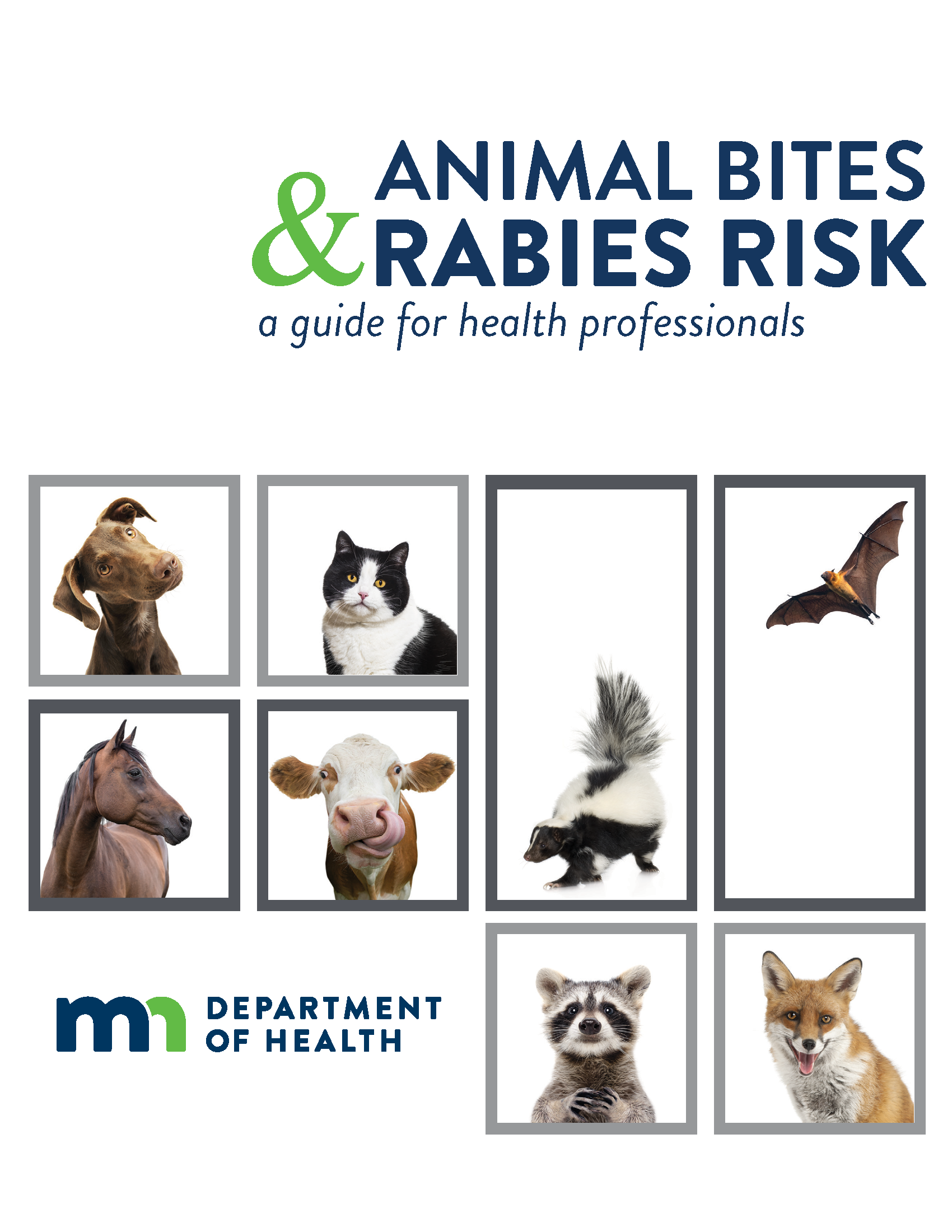Contact Info
Rabies
Rabies is a disease that affects the nervous system of mammals. It is caused by a virus and is typically spread by an infected animal biting another animal or person. The rabies virus dies quickly when it is exposed to UV light or air so it can’t survive in the environment for long. That means we don’t need to be worried about the environment around a rabid animal being contaminated with rabies.
Rabies is a fatal disease; it cannot be treated once symptoms appear. Luckily, rabies can be effectively prevented by vaccination.
- About Rabies
Information about signs and symptoms, cause (transmission), about rabid animals, diagnosis, treatment, and prevention.- Minnesota's Rabies Facts
Fact sheet with frequently asked questions about rabies.
- Minnesota's Rabies Facts
How to Properly Catch a Bat for Rabies Testing (PDF)
Comic showing how to capture a bat safely and send it for testing.
We Found a Bat! Flowchart (PDF)
An easy-to-follow chart showing what to do if you find a bat.
A draft policy for camps and other organizations to help clarify policy around rabies prevention steps.
- Minnesota Rabies Statistics
Rabid animals by county, cases of animal rabies, cases of rabies in domestic animals by species and year, cases of rabies in animals by species and year.
For Health Professionals:

- Animal Bites and Rabies Risk
A rabies guide for health professionals.
Bites to Humans | Human-Bat Encounters | Post-Exposure Prophylaxis Regimen | Pre-Exposure Prophylaxis Regimen | Animals Exposed to a Rabid Animal | Rabies Testing | Specimen Submission Form | Minnesota's Rabies Rules | References | Frequently Asked Questions | Contact Us
Reporting Rabies (animal and human cases and suspects)
Health care providers and clinical laboratories are required to report cases and suspect cases of rabies in an animal or human to MDH immediately 24 hours a day, seven days a week.
Physicians and veterinarians may obtain information on rabies, including human exposure, prophylaxis, and bite management by calling 651-201-5414.


